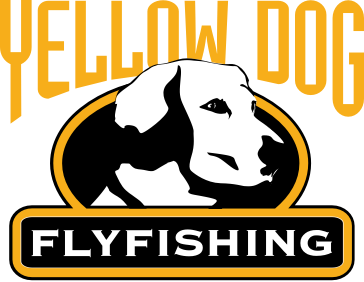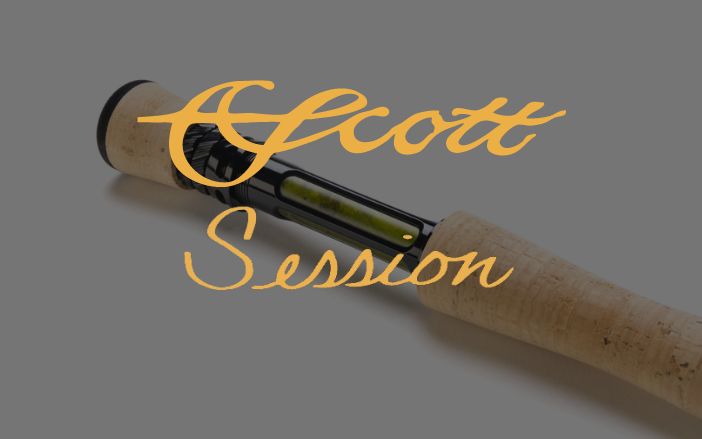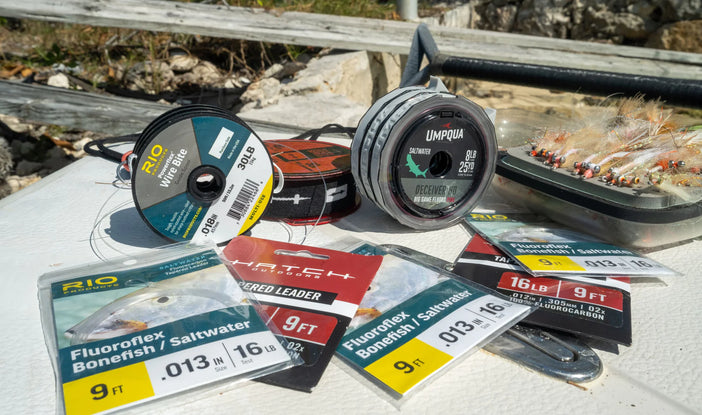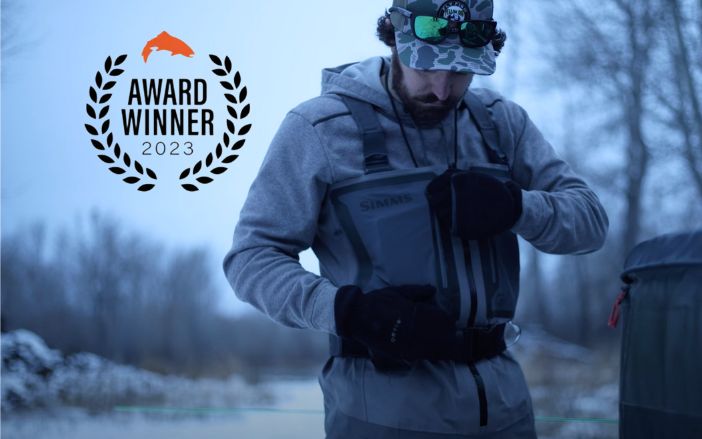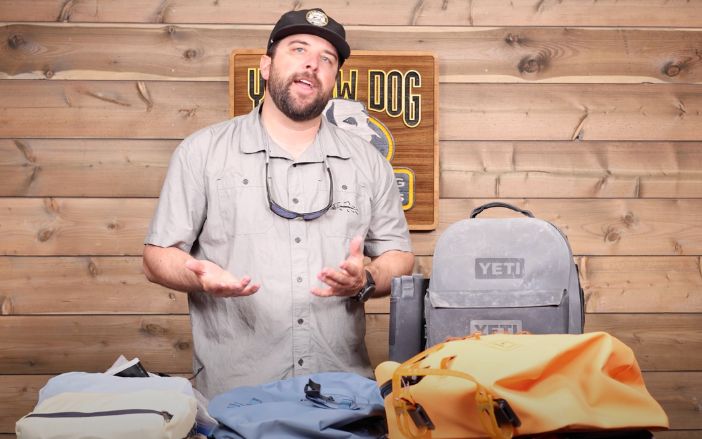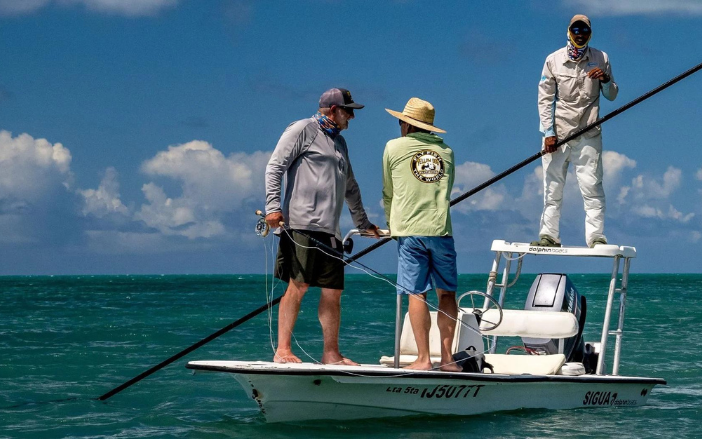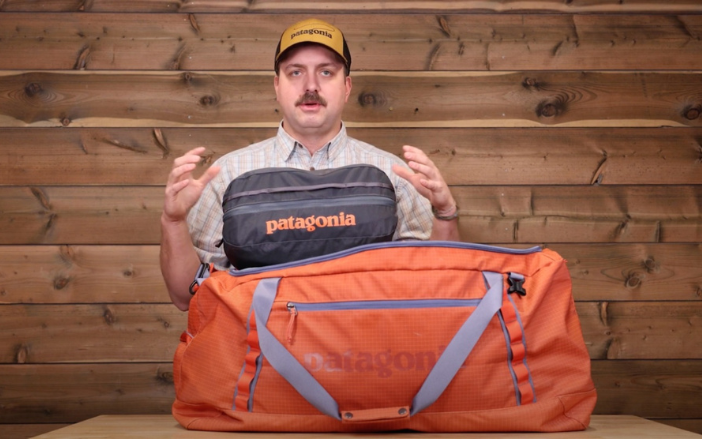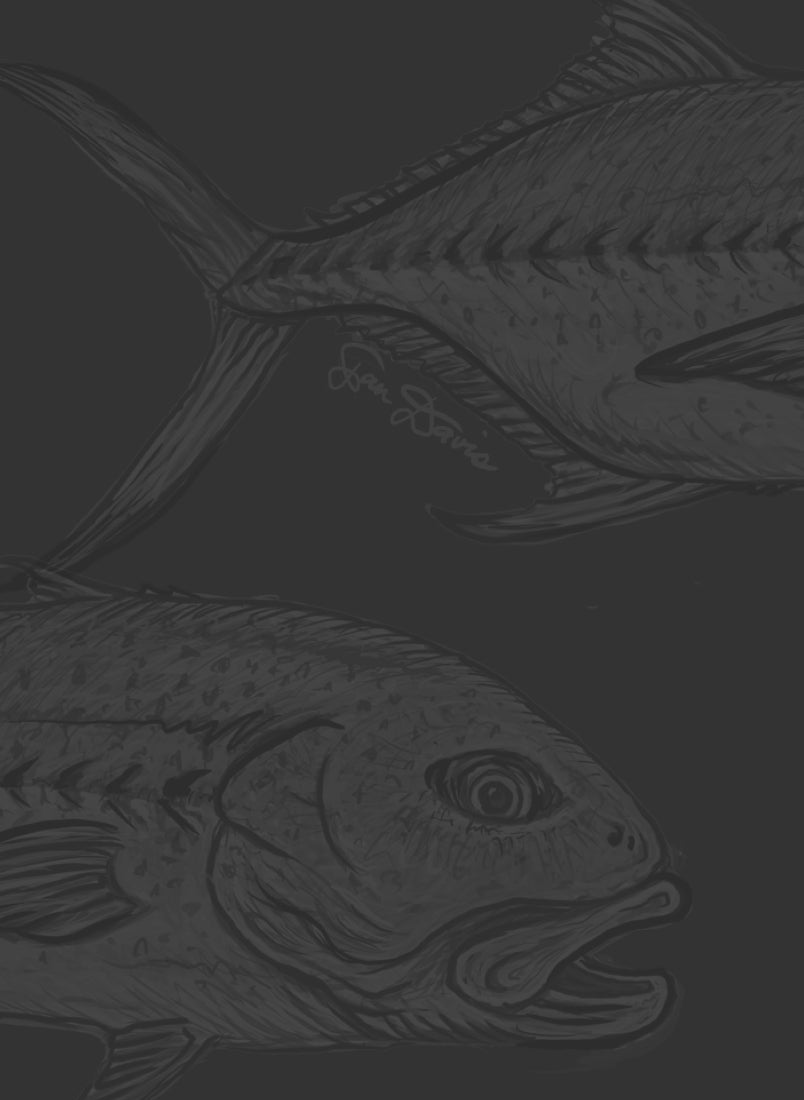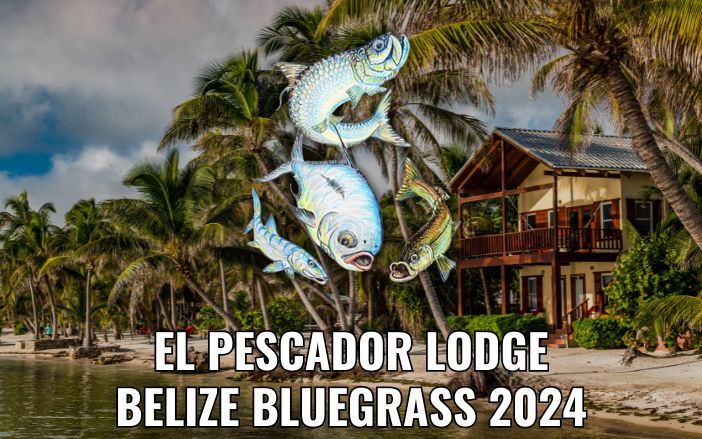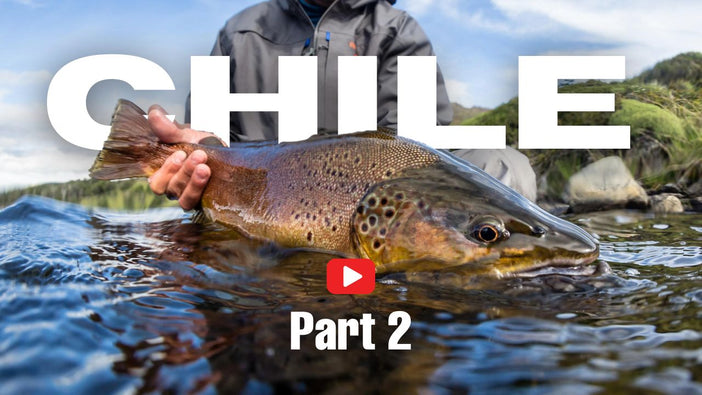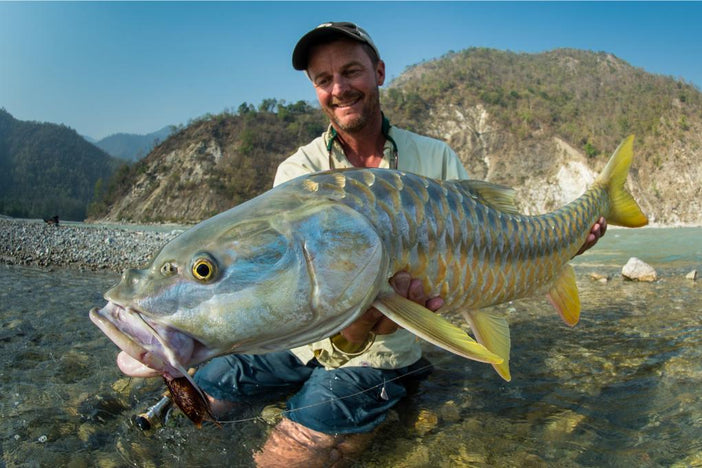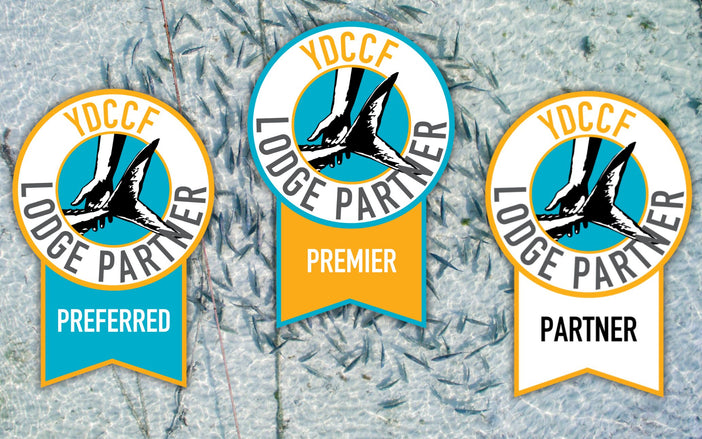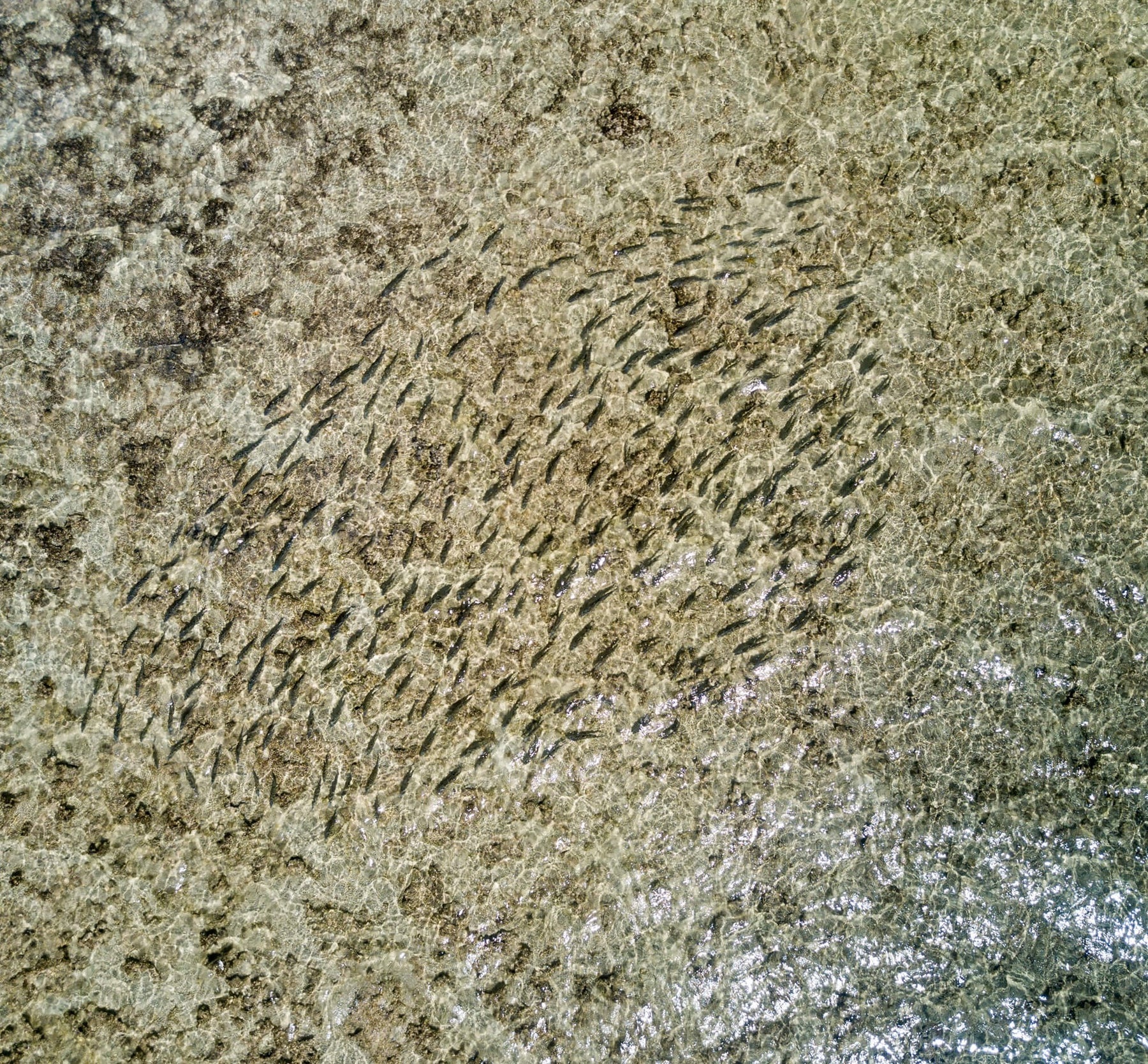Purchasing gear for destination travel can be a stressful affair: with so many options, price points, and personal preferences to consider, acquiring the best gear for you can feel complicated. To ensure you arrive at your destination prepared, we have provided an all-encompassing guide specific to The Bahamas to ensure you have the insights and recommendations you need to prepare for your time on the flats.

What Rods Should I Bring?
In terms of saltwater destinations, The Bahamas is perhaps the easiest for selecting rods, reels, terminal tackle, and flies. With bonefish being the predominant target species, anglers can focus the bulk of their preparations on the "ghost of the flats." With that said, there are opportunities for permit, tarpon, barracuda, and mutton snapper on most Bahamian islands, with some islands having a reputation as productive multi-species fisheries. We encourage you to discuss where and when to travel to The Bahamas with our team, as some destinations have become synonymous with large permit and willing tarpon.
The most important factor when shopping for a rod for The Bahamas is selecting a saltwater fly rod capable of delivering flies quickly and accurately in minimal effort. Generally speaking, a 9' 8-weight is the most popular rod weight for bonefish. However, a 9' 7-weight is ideal for skilled casters, during low-wind conditions, or when casting unweighted flies. While a 9' 9-weight is "overkill" for most bonefish, it is a fantastic option for heavier flies, windy days, or to take advantage of a permit encounter. Our advice? Bring two rods for bonefish to allow for a Plan B in the event of an untimely breakage. That second bonefish rod can help to navigate changing conditions or chance encounters with a Bahamian permit or mutton snapper.

Locations like Grand Bahama, Andros, and some of the out-islands are lesser-known but productive tarpon destinations. Both resident and migratory tarpon are common during the warmer months, so anglers should come prepared. A 9' 9 or 10-weight is sufficient for juvenile tarpon and also makes an excellent option for pursuing barracuda with the addition of a wire tippet. For destinations with adult tarpon, a 9' 11 or 12-weight is the best all-around size--especially in locations where anglers will target large tarpon with sinking lines in the deep Bahamian channels.
Most guides and anglers prefer a fast-action rod for saltwater, allowing the caster to deliver flies quickly and with minimal casts no matter the conditions. However, some anglers prefer more "feel" to their cast, which can be beneficial in calm conditions to allow for delicate presentations.
Selecting the Right Reel
Many guides will tell you a high-quality reel is going to be one of the most important components in an angler's quiver. With an abundance of options on the market, there are a few characteristics a reel MUST have when selecting a saltwater fly reel.
-
Built to Last: Make sure the reel is anodized--a process that strengthens the aluminum most reels are made of. Anodized reels are more durable and can stand up to the demanding conditions of saltwater far better than your average trout reel. Most any reel currently designed for saltwater will be anodized--highlighting how it is a necessity, not a choice.
- Backing: Backing capacity is a crucial component in selecting the right reel for your trip. We suggest the following:
-
Bonefish: Ensure you have between 150-250 yards of 20# backing for your bonefish setup. While this will likely be more than you could ever need, saltwater fly fishing is often unpredictable, and running out of backing is not an experience you want to encounter. If a permit or mutton snapper suddenly appears and you only have seconds to make the shot--you'll be glad you have the extra backing.
-
Permit: It isn't uncommon to need at least 200 yards of backing for a permit--they are fast, powerful, and have a fighting spirit. A reel with 200-250 yards of 30# backing is recommended, especially if you hook into the permit we all dream of.
-
Tarpon: Adult tarpon require the very best in rods, reels, and terminal tackle, while a juvenile tarpon in the 20-pound range does not require much backing, a migratory adult is another animal. If you are targeting larger tarpon, a reel with 200-300 yards of 30# backing is recommended. For juveniles, 150-200 yards of 20# backing will be plenty.
-
Mid-to-Large Arbor: A reel's arbor is the component where line and backing are stored and determines how quickly you can retrieve the line. A larger arbor means anglers can reel in more line with each rotation of the reel handle. If the bonefish you are fighting suddenly turns back toward you, you need the ability to immediately pick up the slack in the line to maintain tension.
- Drag System: Whether purchasing a sealed drag or a cork system, a strong, reliable drag system is important for putting the brakes on your quarry. Most modern saltwater reels will work here and can last a lifetime if well-maintained. A very basic rule of thumb is: The bigger and stronger the fish, the more important your reel's drag system is, and you should invest accordingly.
+ Bahamas Equipment List Video Series
- Essential Flies for the Bahamas
- Fly Rods and Reels for the Bahamas
- Fly Lines, Leaders, and Tippet for the Bahamas
- Apparel and Sunglasses for the Bahamas
- Wading Boots and Packs for the Bahamas
- Luggage and Key Items for Fly Fishing in the Bahamas
Choosing A Fly Line
The most critical aspect of selecting a fly line for The Bahamas is a saltwater fly line designed for tropical environments. That striper line you have hanging around is going to cast like a wet towel and will undoubtedly leave you frustrated. All the top brands make great lines, but finding the taper that works best for your rod and casting stroke comes with a little experimentation. Selecting a high-quality, weight-forward, floating line that is rated for your rod's weight is the best approach for bonefish, although an "overweighted" or "overlined" rod has some casting benefits.
Most fly fishing destinations abroad will not offer you access to fly lines in the event you aren't prepared, so we recommend bringing a backup line. A coral mound, a skiff propeller, or a toothy critter can all damage your line--so having an extra on hand can make the difference while abroad.
In nearly every sight-fishing scenario, a floating line is required. However, tarpon can occasionally be best targeted with intermediate or full-sinking lines. We encourage you to discuss with our Yellow Dog team if this makes sense for your destination, as it does not apply to the entirety of The Bahamas fishery.

Leaders & Tippet
Saltwater guides can be very specific about the length and strength of saltwater leaders, but a general guide to species-specific leaders is as follows:
-
Bonefish: Nine or ten-foot, 12# leaders are the most commonly used bonefish leaders. In some instances, a smaller-diameter leader or tippet can make the difference but requires experience when fighting the fish. We recommend you bring additional spools of 10#, 12#, and 16# saltwater tippet to adapt as conditions require.
-
Permit: Permit leaders are typically nine to ten feet and in the 16-20# range. Spools of 12#, 16#, and 20# tippet are ideal and allows for you to lengthen your leader if conditions are calm or the fish are particularly spooky. In the event you have plenty of wind and choppy conditions, a 20# leader can assist in turning over your fly without spooking your target.
-
Tarpon: Guides can be very particular about their tarpon leaders, and for good reason. Finding the right proportions and composition of leader strengths comes with experience, and we always recommend you trust your guide. Bring spools of 20# and 40# fluorocarbon and an additional spool of 60# or 80# monofilament to use as a shock tippet, but discuss with our team about the potential for tarpon before travel.
- Barracuda: One of the most fun species to target on the fly, the quick addition of 30# wire tippet to the end of your tarpon or permit leader can result in a wealth of fun.

Building Your Fly Box
Bonefish are perhaps the most forgiving of the "Big Three" saltwater species in terms of fly selection. Most Bahamian guides have a few tried and true favorites, but they all work. A good rule of thumb when selecting flies for bonefish is to have variety in size, color, and weight. Bead-chain eyes should make up the majority of your box, with the inclusion of lead eyes for deeper water, as well as a few unweighted flies for super shallow situations. Often, once you find some success with a particular pattern, it may be the fly you fish the entire trip!
Bonefish:
- Crazy Charlie (Tan, Pink, White - #6, 8)
- Gotcha (#4-8)
- Veverka's Mantis Shrimp (#4, 6)
- Spawning Shrimp (#4, 6)
- Bonefish Junk (#2-6)
- CXI Special (Pink, Pearl - #6, 8)
- Gotcha Clouser (White, Tan, Chartreuse - #4, 6)
- Crimp (#4)
- Bonefish Bitters (#4, 6)
Permit:
- Avalon (Tan - #2)
- Strong-Arm Merkin (White, Tan - #2)
- Cathy's Fleeing Crab (Tan - #4)
- Raghead (Tan, White - #2-6)
Destination anglers often opt for locations such as Belize and the Yucatan when targeting permit, but they are fairly common in Bahamian waters. While there are a lot of opinions on permit flies, having a half dozen staple permit flies on hand is always a good idea, though the spawning and mantis shrimp flies in your bonefish box can work in a pinch!

Tarpon:
- Cockroach (#2/0)
- Black Death (#2/0)
- Laid-Up Tarpon (#2/0)
- Tarpon Toad (Chartreuse, Black/Purple - #2/0)
Stu Apte's tarpon patterns and the infamous tarpon toad rank among the best tarpon flies. Having a few smaller 1/0 flies is also ideal, especially for targeting juvenile tarpon.
Barracuda/Jacks/Sharks:
A couple of barracuda flies is always a great addition to any box--where bonefish go, barracuda follow. Needlefish-style patterns or large streamers in chartreuse or white can illicit ferocious charges and strikes. A couple of large poppers for barracuda and the occasional jack crevalle can make for a great way to break up pursuing bonefish!
Apparel, Packs, and Must-Haves
-
Clothing: No matter the time of year, the Caribbean sun can quickly make for an uncomfortable day on the water. While taking a break and enjoying some rays won't impact your trip, staying protected for eight hours or more each day while fishing is crucial for short and long-term health. Additionally, long sleeves and pants will protect you from pesky insects. Quick-dry shirts and pants are strongly recommended for wading or to stay comfortable after the occasional spray over the bow. A wide-brimmed hat and buff are critical for protecting your face, as well as shielding your eyes from excessive light for ease of sight fishing. Additionally, some anglers wear sun gloves to protect their hands.
-
Rain Jacket: One should expect the occasional drizzle or squall to pass through at any time of year in The Bahamas, but especially during the warmer months. It is not uncommon for a forecast to show fair weather only for an unexpected and isolated weather pattern to quickly pass over. Taxying from one flat to the next in wet clothes can make for a chilly and uncomfortable ride, so a lightweight, waterproof jacket should be in every angler's pack.
-
Wading Boots: Wading boots are not necessary for every location in The Bahamas, so understanding the environment you will be fishing in will allow you to decide whether or not to bring them along. Areas like the west side of Andros and The Marls of Abaco are not friendly for wading and fished from a skiff. With that said, if there is a chance you will be wading, flats boots offer support and protection on the flats.
-
Waterproof Pack: We consider this an integral item--whether it be a small pack to protect your essentials or a larger pack to hold everything you need while out on the flats. Protecting your phone, wallet, medicines, or other essential items from exposure to saltwater or rain is an investment worth making.

-
Polarized Lenses: It may sound dramatic, but don't even bother going on your trip without polarized lenses. Spotting bonefish WITH polarized lenses can be a challenge for many, and doing so without the assistance of lenses is a tall task. We encourage you to bring two pairs--both for accidental breakage and additionally to adapt to changing conditions. A pair of green or copper lenses are going to be best for bright, sunny days, while amber lenses are best in partial sun to cloudy skies. The difference these lenses make in spotting fish cannot be oversold!
- Miscellaneous: Saltwater pliers and nippers are handy for tying knots, releasing fish, and quickly changing flies. Sunscreen should be in every angler's pack. A minimum of SPF30 will protect you when applied throughout your day of fishing. Line cleaner is a great addition to any saltwater adventure and ensures your casting does not suffer from salt buildup. After rinsing your rods in the afternoon, quickly dress your lines. Cleaning your equipment is paramount to maintaining your gear and ensuring you are prepared for the next day! Bring along your camera or Go-Pro to capture your trip, but make sure your camera is safely stored in a waterproof bag.
If you are interested in traveling to The Bahamas, give us a call to discuss which of our many lodge partners is the best fit for you!
Get Prepared For Your Next Bahamas Trip
+ Shop our Bahamas Equipment List
Related Articles:
